San Diego's $127 Million Answer to Climate Change


American cities seem to be the hub for climate change strategy these days. For many state governments, the prospect of implementing incremental changes to how they produce, sell and benefit from power is a fight-or-die issue that will ultimately be born out in the Supreme Court. But for many of their cities, like Seattle, San Francisco, New York and even Charleston, West Virginia -- the heart of a coordinated challenge to the Environmental Protection Agency -- change is, well, just common sense.
That's particularly true for San Diego, California, which passed its Climate Action Plan last December just as the COP21 climate talks got underway in Paris. Last week, the city released some of the details of that plan -- which, among other things, aims to convert the city to 100 percent green energy by 2035.
San Diego has already received plenty of impetus for addressing global warming. As one of Southern California's largest cities, it sits at the epicenter of a five-year drought, barely abated by this year's El Nino weather pattern. While other cities across the globe faced record precipitation, the region's sprawling metropolis is still dealing with water alerts and parched city lawns.
Mayor Kevin Faulconer's $127 million plan -- the first installment in a lengthy and ultimately expensive project -- would be wide-ranging in its impacts. Many of those targets are aimed at reducing the city's global warming impacts, such as creating and improving bike lanes, adding more trees to the cityscape, repairing infrastructure, and increasing the use of renewable energy.
Mayor Faulconer is also pushing a bold plan to create a water recycling system that would convert the metropolitan area's sewage to drinking water. At the present time, San Diego ships in about 85 percent of its drinking water supplies, and it is reliant on the Colorado River for more than half of that resource. In years past, rainfall and runoff also quenched the city's thirst, but increasing hot weather and parched conditions pose a sizable threat to local water sources. If successful, the Pure Water recycling program would allow the city to supply its own drinking water source.
But the success of the $3.2 billion Pure Water plan is dependent upon the support of local and national environmental organizations, some of which have expressed doubt that the program could succeed without an amendment to the federal Clean Water Act. And that, critics say, could set a path for politicians who want to weaken the nation's vital water act. Fear of a Republican-led rewrite of clean water rules, therefore, is taking precedence over the success of what could become the country's first step to drinking water resiliency.
Approximately $94 million would be directed at fire prevention, storm runoff infrastructure improvements and other issues peripheral to climate change abatement but critical to San Diego's ability to withstand the impacts of global warming.
Meeting the plan's goals won't be a walk in the park, though. It calls for at least 50 percent of the population to live within range of a major transport hub to walk, cycle, bus or use another form of public transport to get to work. That's a significant target for the 370-square-mile city to meet by 2035.
It also expects local power suppliers like San Diego Gas & Electric to convert to 100 percent to renewable resources by that date. At present, SDG&E gets about a third of its power from green energy. The city is in the process of looking at further ways to cut its energy bill and cut emissions, and officials hired a consultant to determine the impacts of taking over the administration of energy procurement from SD&E. Controversy concerning the skyrocketing costs of energy supply in the San Diego area has fueled debate about ways to make one of California's largest technical centers a more affordable and energy-efficient city.
Image credit: Flickr/torbakhopper
Serving the Unserved: Business Solutions for the 'Base of the Pyramid'
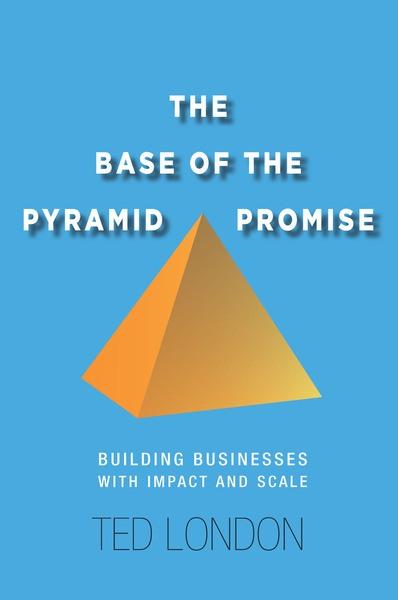

I recently spent four months in a small fishing village in the Ecuadorian province of Manabi with my two young children. It was even obvious to my children that most of the villagers were living in poverty and barely making ends meet.
The average income in the village is $20 a day, which is barely enough to feed a family. Although most children did attend school, many didn't have basic school supplies such as paper and pencils. After getting to know people better, many would mention skipping meals when they were low on money, or only being able to afford a bowl of rice. Few people seemed to have money saved for the unexpected. Instead they depend on friends and family during hard times.
Although some nonprofit organizations had a positive impact, there were also businesses that seemed to prey on lack of knowledge of budgeting and financial planning. People, for example, could buy electronics on credit, but they ended up paying double for the items with interest charges after a year or less. When speaking with locals, they didn't seem to understand this fact and were excited by the opportunity to own more stuff quickly.
For this reason, Ted London's new book, "The Base of the Pyramid Promise: Building Businesses with Impact and Scale," struck a chord with me. London explores how to build better enterprises that improve quality of life for the 4 billion people living in poverty in developing countries.
This market is largely untapped and misunderstood by much of the business community, creating an opportunity. In the book, London explores successes and failures of businesses serving the "base of the pyramid" and the importance of understanding the people and the unique challenges.
The book is basically a how-to guide in serving this market, which many businesses have not been able to properly reach. London highlights examples of companies such as Nike and CEMEX (the world's largest cement company). The former only reached the middle of the pyramid on a relatively small scale. The latter, however, created a successful new business model based on understanding the needs and values of local communities after developing long-term, learning-oriented metrics and co-designing a strategy that leveraged local partnerships. CEMEX created a profitable business serving the needs of low-income people, while also providing construction know-how and innovative financing to communities.
London stresses the importance of co-creating opportunities with the base of the pyramid (BoP), based on shared respect and understanding. This often requires insights into the informal aspects of the local business environment, such as social and ethical boundaries that may not be obvious to an outsider. These boundaries create both hurdles and opportunities that may not be initially obvious.
While socializing with some locals in Ecuador, the conversation turned to a new couple in town who had recently opened two businesses. A local business owner made a statement that they didn't understand how things were done in this town. As a result, they were stepping on the toes of locals, likely inadvertently. London has over 25 years of experience in over 80 countries, and that is clear in some of the statements he makes in the book.
"In BoP markets, most economic activity occurs in informal markets where transactions are largely guided by social norms, values, and tradition, rather than by formal rules and legal requirements," he wrote. "As a result, the ability to understand and respond to how economic activities are embedded in the social context is particularly important. Embedding requires becoming connected to, and integrated with, knowledge, resources, individuals, and organizations found in BoP markets."
Keeping true to the potential of serving the BoP, London also explores the topic of impact assessment. This seems like an important aspect, as it is can be easy to lose site of this when conducting business. The book includes an Impact Assessment Framework that explores how constituents are being affected. London takes a holistic approach by exploring not only economic survival, but also quality of life.
This issue of scale arises throughout the book, with several chapters dedicated to the topic. Creating partnerships with organizations in the developing world to leverage scale is one of the strategies presented for taking pilot projects to a larger scale. He takes partnerships a step further with the concept of collaborative interdependence, creating a dynamic web of partnerships that adjusts as the business and markets evolve.
"The Base of the Pyramid Promise" is a timely book, as many businesses look to have a positive impact on the world. Instead of merely helping businesses sell more stuff, the book offers a road map for increasing quality of life for billions of people. This is a must-read for anyone interested in such ventures.
Image credit: Book cover, "The Base of the Pyramid Promise: Building Businesses with Impact and Scale"
How Technology is Fighting Climate Change


By Jessica Oaks
The National Oceanic and Atmospheric Administration, European Environment Agency, Japan Meteorological Agency, and the scientific community at large all agree: Climate change is real and predominately the result of human activities. Of course, the silver lining to this dark cloud is that if climate change is the result of human activity, then there exists the possibility of a human solution. Here are some ways that technology may help us fight climate change.
Awareness and education
Putting a dent in climate change and reversing the upward trends which have been witnessed over the past decade or so requires awareness and action. These solutions can help educate people on how to save energy which, in turn, can lower greenhouse emissions and carbon footprints.
Mobile technology
Mobile devices are everywhere, and charging these devices places a strain on electrical infrastructures. But mobile devices are also tremendously helpful – they put the world at your fingertips and connect people like never before.
Thankfully, modern mobile processors, like Qualcomm's Snapdragon, are becoming increasingly energy efficient, and even offer features like Quick Charge to lessen their burden on electrical grids. Collectively, these improvements could significantly reduce carbon footprints worldwide. If mobile is here to stay, efficiency is key.
Mapping technology
From GPS technology for personal use to advanced satellite mapping for the commercial realm, today's mapping technologies provide us with a wealth of information. Not only do our smartphones have access to mapping information that would have been top secret 20 years ago, but satellites are also providing unparalleled information on climate change, ocean temperature, wind and more, all of which helps governments and private organizations alike institute policies designed to mitigate environmental footprints.
Open data and open-source technology
Achieving technical solutions to reverse or mitigate climate change will depend in part on collaboration. Companies like Tesla Motors, which made its patents open source, help champion the cause of technical collaboration. But ultimately, corporations in the energy sector will have to follow suit.
There is some collaboration among companies researching fusion technology, but there's always room for more. By working together, the spread and adoption of new technologies can be accelerated.
Alternative fuel technologies
Climate change and global warming is primarily the result of the burning of fossil fuels (coal, oil and natural gas). As fossil fuels are burned, carbon dioxide is released into the environment – in 2014, the United States alone produced 5.5 billion metric tons of carbon dioxide (CO2 accounts for approximately 80 percent of total greenhouse gases). Reduce fossil fuel usage, and we reduce greenhouse gases. Alternative fuels could help us get there.
Self-driving cars
Self-driving cars have the power to reduce traffic, reduce waste, optimize driving patterns, and generally make travel to and fro more efficient – all of which can reduce fuel usage and greenhouse gas emissions.
And self-driving cars, unlike rocket packs and flying cars, are actually possible – they're on the horizon! Google is working on them, Tesla has already rolled out elemental autonomous functionalities in its cars, and car-ride services like Lyft are looking into them, too. The autonomous car could be just down the road, and it may help save the future.
Electric cars, hybrids and alternative-fuel vehicles
Reduce fossil fuel usage, and you reduce greenhouse gas emissions. It really is that simple. And though electric cars aren't truly zero-emission (after all, the electricity that powers them is being generated by power plants – this is known as "life cycle emissions" and it varies based on region), they do help limit greenhouse gas emissions to a single source, which aids in management and control. Electric cars, along with hybrids and alternative-fuel vehicles like Honda's fuel cell-powered Clarity, also help reduce total fossil fuel consumption, which lowers total greenhouse emissions.
Technology is the answer
Man-made problems require man-made solutions. From mobile processors that are more energy efficient and quicker to charge to electric and alternative-fuel vehicles that help cut down of fossil fuel consumption, technology allows us to reduce our carbon footprint and lessen our environmental impact. All that's required for success is worldwide adoption. What part will you play?
Image credit: Flickr/Håkan Dahlström
Jessica Oaks is a freelance journalist who loves to cover technology news and the ways that technology makes life easier. She also blogs at FreshlyTechy.com. Check her out on Twitter @TechyJessy.
Corporate world moves forward with human rights transparency


By Antonio Pasolini —
Supply chain transparency regarding human rights is becoming an increasingly important CSR issue. After consulting with more than 400 contributors, the Corporate Human Rights Benchmark (CHRB) has published its Pilot Methodology. In November, it will make public its first round of benchmarking corporations on human rights performance, starting with the top 100 companies from the agricultural products, apparel and extractive industries.
KnowThe Chain, which in January published a pilot benchmark on slavery and forced labor, will follow that with the June launch of a second human rights benchmark. It will include 20 companies in the information and communications technology (ICT) industry sector. After the ICT sector results, KnowTheChain will follow with benchmarks of the food, beverage and apparel sectors.
Back in 2010, the United Nations’ Human Rights Council endorsed Professor John Ruggie's Guiding Principles on Business and Human Rights. The principles made corporations aware that transparency on human rights issues, including forced labor, is on the agenda of sustainable investors and human rights advocates.
Consumers are also aware of this issue and are demanding more transparency from the companies they support. A good example is the recent case of the Thai fishing industry. A study by fair labor NGO Verite revealed that fish coming from the Southeast Asia country, which exports $7bn worth of seafood per year, was enmeshed in a cycle of forced labor that affected most importers from Europe and the U.S., causing huge reputational damage to the companies involved.
Slave labor
Slave labor is one of the major human rights issues in today’s world. It is ubiquitous enough to be traced in the supply chain of many companies. 2014 data from the International Labor Organization (ILO) estimates that 21 million people are currently trapped in those conditions.
As we have previously reported, the issue of forced labor has been gaining prominence with more media coverage and government action as well. The UK has passed its Modern Day Slavery Act while in the U.S. President Obama’s Executive Order 13627, came into effect. The Order strengthens protections against trafficking in persons in federal contracting.
Image credit: KnowTheChain
Source: Justmeans
Van Jones to Dems: Trump Could Really Win the Presidency
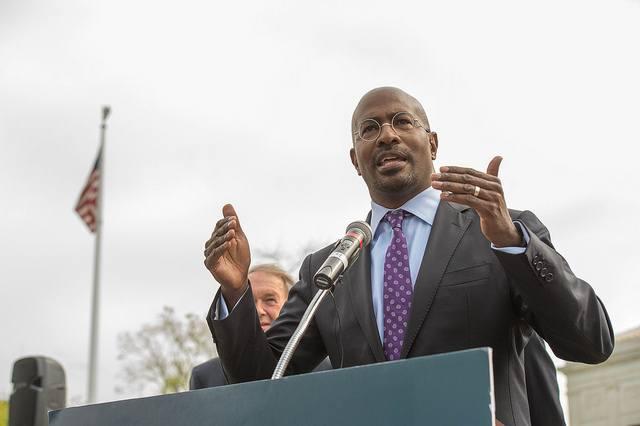

Just about everybody has an opinion about Donald Trump these days. Both here in the U.S. and abroad, political pundits have taken the opportunity in the last few weeks to sound off about the Republicans' de facto choice for president. Mexico's former president, Vicente Fox recently used his neck ties and tweets to call attention to Trump's inconsistent political platform. So did a former Miss West Virginia, who called out Trump last week for his uninformed generalizations about Latino cultures. After Trump posted a photo of himself on Twitter dining on what he called an "Hispanic" Cinco de Mayo taco bowl from Trump Tower's kitchen, Andrea Mucino offered a fact check.
"Too bad a taco bowl isn’t Mexican, the Trump Tower Grill isn’t either, you’re not eating taco bowls from New York because you’re in WV today," said Mucino, who now works for a political consulting firm and pointed out that calling Cinco de Mayo an Hispanic festival was even worse than calling the American-devised taco bowl a symbol of Mexican ethnicity. "Cinco De Mayo isn’t a hispanic holiday it’s a Mexican one, and you are the same color as the taco bowl shell. But I digress!," added Mucino. [Ed. note: some consider Cinco de Mayo an American holiday since it is mostly celebrated in the U.S.]
But as embarrassingly funny as Trump's most recent faux pas may seem, one pundit isn't laughing. In fact, he has a sobering message for Democrats who may feel that Trump's inflammatory comments are helping the Dems to cinch the candidacy:
Trump really could win the presidency. In fact, opines CNN political correspondent and former Obama aide, Van Jones, he probably will.
If that sounds terrifying -- and it should says Jones -- voters have only to look to the stats that disenfranchised Democrats are helping to build, and African American voters have the power to turn around.
"Seventy percent of African Americans have a horrible view of Donald Trump,” acknowledges Jones, who points out that the average Democrat may feel that counts for something in today's election scenario. It doesn't. "In order for the Democrats to win the White House they don’t have to get 50 percent of the black vote or 60, or 70, or 80, or 90. Democrats in order to win historically need 90 to 92 percent of the black vote.”
The call is still out as to whether Dems in general are defecting to the Trump camp, but stats do suggest that the black Democratic vote could be in jeopardy at the present time if Hillary Clinton becomes the party's candidate. According to New York Post writer Carl Campanile, the number of African Americans who voted in Democratic primaries took a nose dive in March, especially in key states like Ohio and Florida, where the number of black voters who turned out to vote in Democratic primaries were extraordinarily low. He based his story on Black Lives Matter statistics that suggested that the black vote isn't a sure thing if Hillary wins.
But what may give Trump his greatest ability to shatter historic voting blocs says Jones, is, ironically, the trend that elected the country's first black president: New media and the savvy ability of a candidate to use it as a megaphone for his or her cause.
Trump's legendary role models surprisingly haven't been Republicans, but Democrats. Franklin Delano Roosevelt, John F. Kennedy and Barack Obama all used the new media of their time to surprise, titillate and capture voters' attentions.
"FDR changed the rules of the game because he mastered radio. He was able to take radio and just completely master that. Then you had JFK and JFK was able to master television — new medium, new master, new president." Obama's champion use of mediums like online fundraising and social media not only transformed how candidates fundraise, but how they reach out to us before we head to the polls.
Trump's modus de operandi has been reality television, a medium that not only projects a message but seems convincingly real. And his ability to use the talents of social media gurus who can then wrap that message into a succinct 140-character message drills home the Trump-made concept -- whether it's accurate or not.
"It’s a new media era, the era of social media, especially Twitter and reality television,” says Jones, who was the momentum behind a list of social enterprises that have helped to bring social justice issues to the fore in recent years.
But it is the public's misinterpretation of Trump's ongoing "gaffs" and outrageously insulting comments on social media, he says that is the most alarming.
"The outrageous things he says are in fact, not breaking the rules." Sure, Trump lost some ground when he insulted women with proposed penalties for abortions, or when he stated he would cancel the U.S. membership to NAFTA. But on the whole, his extremist statements have worked to his favor.
"You don’t get fewer followers when you insult somebody on Twitter, or say something outrageous on Twitter, you get more followers." His taco bowl photo insulted millions of Americans and untold Hispanic viewers around the world, but it garnered media headlines like, "Donald Trump broke the internet on Cinco de Mayo with just one photo," and Trump taco bowl tweet blows up Twitter." For Trump the candidate, repairing his rapport with the Latino community wasn't what was important. Gaining new viewers was: those social media viewers Trump has in the past, categorized not as voters, but "fans."
All of this, says Jones, points toward a calculating strategy that took the Republicans by surprise and risks fooling the Democrats as well. And it's an alarming strategy that could win him a much-needed audience when he starts his stumping in the African American communities around Detroit, known for high levels of poverty, unemployment and angst about NAFTA. It's there that Trump stands to win those votes that he needs, that additional 22-30 percent of black voters yearning for change. It's also in depressed areas where jobs have been scarce, says Jones that Trump can promote his anti-immigrant message.
"You mean you can’t find three black folk out of twenty [in the rust belt] who might fall for that kind of anti-immigrant message and that anti-NAFTA message and that anti-poverty message?" he challenges.
"This is Trumpzilla," he warns.
"We are making the same mistake as liberals that the Republicans did. All of us progressives need to come together." And if recent attacks by Trump and Trump supporters against those he sees as his rivals are anything to go by, Democrats should be very worried.
"Trump will unleash hell on the Latino community … he will unleash hell on the Muslim community," Jones predicts, noting the appointment of Supreme Court justices by Trump could change U.S. political momentum for years to come.
"We need to mobilize the entire nation to recognize the dangers of giving a man like this the FBI, the CIA, the NSA, IRS, and the Pentagon to attack whoever he wants to, and that is before he even gets to Congress to pass a bill."
Whether Van Jones' message will ring true with those disenfranchised Democratic voters who were hoping for Bernie and feel their votes have been discounted by Hillary, is yet to be seen. Celebrities and pundits ranging from comedians to journalists in various parts of the globe have stepped up in recent months to express concern about Trump's presidential platform and its threat to world politics.
Time will tell as to whether U.S. voters are listening and agree. Listen to Jones' warning message here:
Could Omega-3s from Algae Save the World’s Oceans?


Remember when biofuels from algae were supposed to save the world? We at TriplePundit do, as earlier this decade we frequently received announcements boasting, “This renewable algae biofuel will change the world in six months!”
Unfortunately for that industry, several limitations affected algae-based fuels’ ability to scale, including the space such facilities require and high upfront capital costs. Renewables have scaled, but in the form of solar and wind power, not biofuels. Many airlines have operated token flights with a mix of algae-based and conventional jet fuel to show their sustainability street cred, but this is an industry that has a long and tortured path ahead if it will ever have a foothold within the global energy sector.
But it turns out that algae may still have an important role in helping another industry mitigate its environmental impact and become more sustainable.
TerraVia, formerly known as Solazyme, announced that it is entering the aquaculture sector with an algae-based feed product. The company claims this development will help alleviate the overfishing that plagues the world's oceans due to the annual demand for omega-3 fish oils, which the company says has reached 1 million tons annually for both animal and human consumption.
These omega-3 oils, or DHA (docosahexaenoic acid), are especially coveted as fish feed because of the surging global aquaculture market, which is estimated to be valued at $200 billion by 2020. To offer more details about this new venture, TerraVia’s global sustainability director, Jill Kaufman Johnson, spoke with TriplePundit by telephone from the company’s offices in San Francisco, California.
TerraVia is manufacturing these omega-3 oils, branded as AlgaPrime, from algae in a partnership with the agribusiness conglomerate Bunge at a plant in greater São Paulo, Brazil. TerraVia says these oils were ready for full commercial production late last year, and that it has reached an agreement to sell the oils to an undisclosed supplier that produces feed for aquaculture companies raising salmon, trout and other species.
Rather than impose further stress on the world’s oceans, TerraVia says this “renewable oils” processing center can create an alternative omega-3 product while requiring lower carbon, water and land inputs. “Fish in the ocean are already eating micro-algae rich in omega-3s, so what we’re doing is taking the middleman out,” Johnson said as we began our conversation.
Sugar produced by Bunge allows algae to thrive and grow in tanks. In turn, the feedstock that provides the energy required to churn out algae-based omega-3 oils is waste from Bonsucro-certified sugar cane — which has long been used to create ethanol for automobile fuel in Brazil. And the big difference, Johnson said, is how the company’s algae is produced.
“The algae we are using is heterotrophic, which means it grows in the dark,” Johnson explained, “and since it can be grown in enclosed tanks, we don’t have the problems of contamination unlike other algae oil producers.”
Contamination risks have long bedeviled algae producers, which have generally relied on species that required photosynthesis, e.g., sunlight, in order to grow in open ponds or tanks. One bird flying over a pond, or a gust of wind, can spoil a batch of such algae.
But that risk is averted within the massive tanks at Bunge’s facility. They are eight stories high, which allows TerraVia to produce 100,000 metric tons (30 million gallons) of oil annually. That oil then becomes raw material from which a bevy of products can be extracted. Raw materials are also not hauled over long distances, as Bunge has already been operating the site’s nearby sugar mill for a few years.
“What’s different about us from other algae oil producers is that by growing this strain of algae through this fermentation process, we can produce products that are pure and consistent,” Johnson told us, “and this also allows us to scale in the way that other companies have not gotten to yet -- and I don’t know if they will.”
TerraVia is following the trend of other algae-based oil producers, which have shifted away from developing the oil for fuel and instead now focus on food and consumer products. Instead of concentrating on energy companies and airlines, TerraVia instead has found business opportunities by creating products that could disrupt global supply chains.
For example, the company has found that algae-based oils can be a viable alternative for palm oil, the demand of which has wreaked havoc across rainforests in Indonesia and Malaysia. TerraVia also launched a business unit that will develop algae-based food products, which the company insists can replace the consumption of animal fats and protein.
Over the years, a bevy of startups have long tried to commercialize algae products such as spirulina, long touted for being rich in protein and antioxidants. But it has been difficult for companies to incorporate these ingredients into food products that consumers will actually eat, and many nutritionists and scientists will tell you these ballyhooed health claims should be taken with a grain of salt.
But for TerraVia, this bet on the commercial scale of algae is one worth taking. The company’s financials are a mess, and its stock price, which was over $25 a share in 2011, is barely over $2 a share as of press time, although the company’s recent announcements have given its stock price a bump.
“We want to chip away at the amount of fish used to process these omega-3 oils,” Johnson explained, “and what’s exciting about our process is that the process in which sugar can turn algae into oil only takes a matter of days.”
A similar process to harvest these oils has long been underway in oceans. But it can take several weeks, even months, for nature to create omega-3s, and it is clear that the global fishing industry has severely disrupted the environment throughout the world’s oceans.
If the aquaculture sector buys into TerraVia’s technology, and that of other companies in this space, this algae oil pioneer could manage to turn around its financial performance and help restore our oceans and seas at the same time.
Image credits: TerraVia
Obama Cracks Down on Tax Evasion, While U.S. Thrives as an Offshore Tax Haven

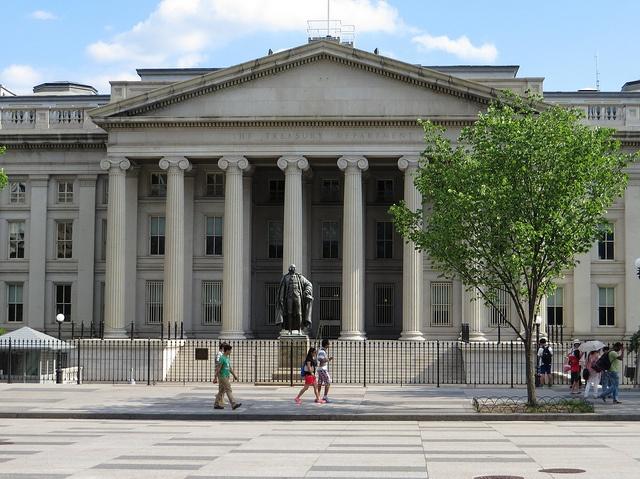
The fallout from the release of the Panama Papers continued last week as the Obama administration announced new steps to fight tax evasion, money laundering, opaque corporate registers and corruption in the financial services sector. Not expecting to score any cooperation from Congress in an especially combative presidential year, Treasury Secretary Jack Lew said new regulations will improve transparency and bolster the integrity of the U.S. -- and global -- financial system.
These moves come as the person who leaked the Panama Papers to media groups, including the BBC and the German newspaper Süddeutsche Zeitung, explained in a 1,800-word statement why such action was taken. And while the White House has touted its leadership in curbing abuses within the global financial system, plenty of observers have pointed out that one of the biggest offshore business havens is actually the U.S.
The White House’s agenda in tackling money laundering and offshore tax havens will involve some unilateral executive branching and quixotic lobbying of Congress. New Treasury regulations on “customer due diligence” will seek to boost transparency by requiring financial institutions to collect, verify and disclose as necessary (as when requested by law enforcement) personal information of individuals who own the companies that use these banks’ services.
The Treasury and Internal Revenue Service (IRS) will also forbid non-U.S. citizens from hiding behind “autonomous entities” (i.e. shell companies) that are formed in this country. Setting up single-member limited liability companies (LLCs) is currently an easy process to complete and often does not require personal identification. New rules, however, would require an employer identification number (EIN), which would make it more difficult to shield foreign owners from the IRS and make these entities less effective in hiding assets.
The Obama administration also said it will ask Congress to pass new legislation that would require law firms and their attorneys to both know and report information on beneficial ownership to the Treasury Department. Professional services firms such as Mossack Fonseca, the law firm implicated in the Panama Papers, were previously not required to disclose such information to government agencies such as the IRS; new rules will change that practice as non-compliance will result in legal penalties.
Meanwhile, the White House is also asking Congress to draft legislation to fight cross-border corruption, has urged the Senate to take action on tax treaties the administration says are long overdue, and pass legislation that will strengthen America’s ability to reciprocate work with other nations in order to fight tax evasion.
This action may all sound like an effective response to what has been disclosed in the Panama Papers. But as plenty of nonprofit and civil-society organizations pointed out, offshoring is about more than having a law firm office in Panama City create shells to hide assets, or to hide accounts in the Cayman Islands, Switzerland or Dubai. Offshoring is less about physical location and more about a legal process. In fact, the Tax Justice Network’s Financial Secrecy Index ranks the U.S. third on this front, behind only Switzerland and Hong Kong.
Part of the reason for the U.S. leading in financial opaqueness is because this country has 50 states with 50 different sets of rules to register business entities. While American politicians love to pontificate on how we need to go after those terrorists and wipe out their financial networks, the fact is that several states in the U.S. make it easier to create autonomous business entities than famed offshore tax havens such as the Bahamas, Jersey and, of course, the Cayman Islands.
One Australian university study posited that lax disclosure rules in states such as Delaware, Florida and Texas allowed the notorious Russian arms dealer Viktor Bout to aid terrorist organizations accused of murdering U.S. citizens. Such lax rules are why, in 2009, Raymond Baker of Global Financial Integrity complained, “In many states, starting a company is easier than obtaining a library card.”
“The most glaring omission in the company formation process is a lack of requirement for disclosure of beneficial ownership. In other words, when forming a company it is not necessary to disclose who the primary beneficiary and controller of the newly formed entity will be.” – Raymond Baker, Global Financial Integrity
This failure on behalf of governments, banks and the media is what led “John Doe,” who released the Panama Papers, to take action to stem what he calls one of the largest reasons behind growing income inequality worldwide:
“Banks, financial regulators and tax authorities have failed. Decisions have been made that have spared the wealthy while focusing instead on reining in middle- and low-income citizens," said "John Doe," the Panama Papers' whistleblower. "Hopelessly backward and inefficient courts have failed. Judges have too often acquiesced to the arguments of the rich, whose lawyers — and not just Mossack Fonseca — are well trained in honoring the letter of the law, while simultaneously doing everything in their power to desecrate its spirit.”
What seemed to be a benign process -- corporate registry -- has become a tool over the years to allow some of the global financial system’s biggest abusers to stay anonymous and hide money procured by dubious means. Whether national governments can cooperate in order to stop this trend is a big question, as many citizens increasingly feel the world economy is unfairly stacked against them.
Image credit: Ken Lund/Flickr
4 Ways to Grow Clean-Tech Jobs in Your City
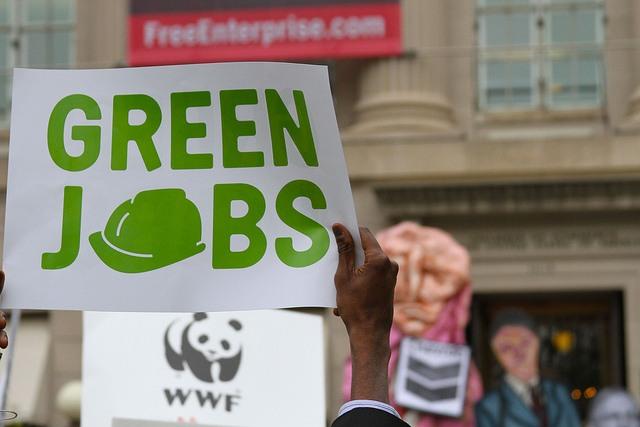

The best kept secret in America is that clean tech is a mega job-creator. America has approximately 563,000 electric utility work associates. California alone has created over 500,000 “advanced energy” jobs. Nationally, over 800,000 people are employed in energy efficiency.
Clean tech not only accounts for a large number of jobs. Importantly, it also creates local jobs. These are jobs that every state and city can have.
They are also steady jobs. Real estate and fossil fuel bubbles come and go. Reducing costs and emissions is a mega trend that is gaining strength during the 21st century.
So, how does a community realize this job and economic development potential? California offers real-world insights. The great news is that this is not rocket science that is open only to a narrow group of experts. Smart/clean tech is a mass-market opportunity that every community can harvest. To grow jobs, you don’t have to invent it. You just have to sell it, install it, maintain and repair it.
Small business and communities benefit from advanced-energy development
When you think of California jobs, the attention is often on the state’s entertainment or agriculture industry. Both are global markets that California companies dominate. The surprise is that California has created more “advanced energy’ jobs than entertainment jobs (145,000 jobs) or agriculture jobs (475,000 jobs).
This job growth is occurring across smart/clean tech sectors including solar, energy storage, smart grid, energy efficiency and electric cars. While solar has won deserved attention in California’s job-creation success story, it is energy efficiency that is the largest job creator. Building efficiency accounts for about 6 out of 10 advance energy jobs in the state.
California is succeeding in growing jobs faster than the U.S. average -- and advanced energy is a major reason why. Advanced energy jobs are growing six times faster than California’s overall economy.
Small businesses dominate California’s advanced energy jobs: 75 percent of these jobs are with businesses that have 24 or fewer work associates. These are the businesses that are installing, maintaining and repairing smart/clean tech.
Advanced-energy job growth is happening at the local level in communities across California. Approximately 3 percent of all jobs, across regions as diverse as Northern California is to Southern California or the Inland Empire, are in advanced energy. No part of California is losing out on this economic development and job-creation opportunity.
Four keys to California’s success in growing advanced-energy jobs and local economies
The four keys to California’s success in smart/clean tech job growth are:
- Smart/clean tech is achieving price-competitiveness. Smart/clean tech is now winning price competitiveness against fossil fuels and grid prices. Customer-owned solar is now price competitive with most retail utility prices. Electric cars are price competitive agains 75 cents per gallon gasoline prices. Smart/clean tech is achieving the competitive advantage of costing less plus meaning more in terms of environmental/human health attributes.
- Public policy. California believes global warming is real. The state’s policymakers see global warming solutions as a business opportunity. The state is implementing legislation and executive orders that create consumer demand for smart/clean tech. This demand has generated economies of scale for California’s businesses. The result is that California is leading the U.S. in economic growth while also reducing its climate-changing emissions.
- Consumer demand. California consumers are embracing smart/clean tech. They are doing so because smart/clean tech lowers electricity bills. They are doing so because electric cars are fast and Californians love fast cars. They are doing so because tech is cool and smart/clean tech is gaining the key millennial generation status-ranking of being “cool with a purpose.”
- Green builds business. Green best practices make money. They do so by reducing business costs. They win customers. Green promotes local businesses. Green promotes success across California’s diverse population. Thirty-eight percent of California’s advanced-energy jobs are held by minorities. Smart/clean tech will only grow as a proven green best practice that builds businesses and jobs -- in every state and in every city. The only question is: How quickly will your town or state seize this green path for creating new jobs and economic development?
U.S. Court Dismisses Rana Plaza Lawsuit


Families of the 1,130 victims who died in the Rana Plaza factory collapse three years ago in Bangladesh should not expect to find any sort of restitution in the U.S. any time soon, in large part because of legal technicalities.
That is the reality after a judge in Wilmington, Delaware, dismissed a lawsuit filed against three major U.S. retailers by the family of a garment factory worker who died in the disaster and an inspector who was amongst the 2,500 injured in the factory’s collapse. Judge Mary M. Johnston of Delaware Superior Court ruled that Bangladesh’s one-year statute of limitations applied in the case, Abdur Rahaman et al. v. J.C. Penney Co. Inc., The Children’s Place and Wal-Mart Stores Inc., which was filed just shy of Delaware’s two-year statute of limitations.
And in a victory for companies who claim they should not be held directly responsible for what goes on within their supply chains, Judge Johnston also ruled that the Children’s Place, J.C. Penney and Walmart were not the plaintiffs’ employers and did know owe what, in legal terminology, is called “duty of care.”
Attorneys representing the family of Sharifa Belgum, who died in the factory collapse at the age of 30 and left behind four young children, and Mahamudul Hasan Hridoy, the injured inspector, offered several arguments as to why the retailers should be held liable for the April 2013 disaster.
Among the arguments is the fact that the companies should have known about the conditions at Rana Plaza, and in addition, all of them had previously made public statements about their ethical sourcing policies.
But Judge Johnston ruled that, because these workers were not directly employed by the retailers, the court could not decide on any duty of care claim.
While this lawsuit’s dismissal is a cruel reminder about the injustice suffered by thousands of Bangladeshi garment workers, in fairness, U.S. legal precedent arguably prevented Judge Johnston from ruling in favor of the plaintiffs in this case.
Delaware law made it clear that this was a case to be tried in Bangladesh, even if the companies were U.S.-based. There may be legal hope north of the border, however: A lawsuit against the international retailer Loblaws is moving forward in the province of Ontario’s court system.
Meanwhile Bangladeshis, who are an important cog in the global garment industry wheel, feel that justice and dignity are still elusive.
After the Rana Plaza disaster, many companies pledged to contribute to a multimillion-dollar trust fund, although several large fashion houses, including Benetton, dragged their feet before international pressure convinced them to open their checkbooks.
But despite the outcry and the promise of many manufacturers and retailers to improve conditions in Bangladesh’s garment industry, the evidence suggests that the demand for fast fashion has allowed the apparel industry’s growth to surge in the South Asian country -- and not in a good way. One study led by New York University alleges that factory conditions for many Bangladeshi garment workers are still miserable. Yet another report alleges that the Children’s Place is still sourcing from factories where conditions are unsafe.
So, while many companies continue to hide behind ethical sourcing statements and say they are striving to cleanse their supply chains of malfeasance that could lead to another Rana Plaza disaster, it is pretty clear that consumers still need to be educated — if not pressured — to know how their affinity for cheap clothes is behind this cruel reality in one of the world’s poorest nations.
Image credit: Jaber Al Nahian/Flickr
Mutuality, Redefined?
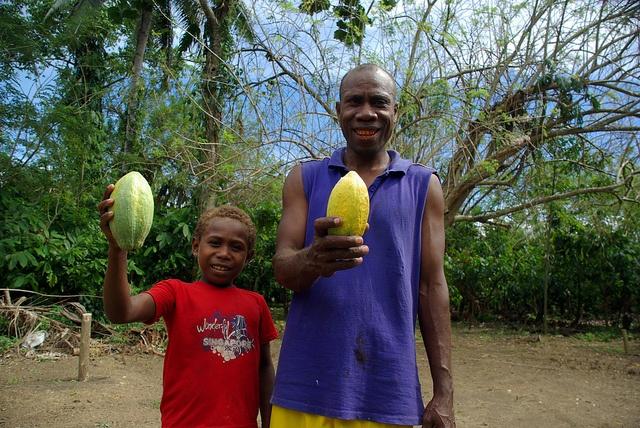

By José Vázquez
Big for-profits are ‘going good’ by infusing existing business models to address and mitigate social inequalities. Goldman Sachs elevates impact on social challenges in its 2014 Environmental, Social and Governance Report. Unilever intends to grow business while reducing environmental footprint and increasing positive social impact through its Sustainable Living Plan. Chevron is empowering women through business skills development in Brazil.
Going good, going social, what have you, is trending. And with new trends comes new research analyzing the advantages and limitations of this more ‘socially conscious’ way of doing business.
Some of this research is happening at Oxford University where the Saïd Business School and Mars Inc. have tied the research knot in a private-academic partnership intended to “... better understand the value of mutuality and its application in different organizational and economic contexts.”
Saïd and Mars should consider mitigating the potential for any ‘big brother’ effect and address other, non-economic needs of local communities in experimenting with different applications of mutuality, particularly toward supply chains
What is mutuality?
The concept of mutuality applies to a range of situations within the context of a business relationship. Mutuality is flexible, describing items such as alignment of interests between business partners, interpersonal connections between stakeholders or the logistics of profit-sharing for shareholders as is typical with a public limited company.
Mutuality, with a twist
In the traditional sense, mutuality would be equal seats at the same table. For Mars and its supply chains, this is not the case. Instead, Mars’ approach to mutuality is investing in new technology for cacao farmers. Already, the investment in new technology has resulted in almost triple yield, increasing both Mars’ access to more cocoa and income for farmers.
Mars isn’t the only one interested in making its supply chains more robust through investment. Amy Haimerl writes about Whole Foods and its loan fund which helps vendors finance their growth. Whole Foods has directly invested about $20 million so far. Consider this mutuality, but with a twist.
Mitigating the big brother effect
But wait a second. Step back and let’s soak this all in. A big for-profit is pumping money into impoverished, resource-deficit communities. And now what? Reframing the question: So what?
With this investment, Mars risks producing a ‘big brother’ effect. Poor supply chains may experience pressure to accept new investment and in turn produce higher yields. Since Mars is not providing seats at the table, how will this redefined form of mutuality assure some balance of power between the huge company and local farmers?
Mars should conduct public engagement to reduce a big brother effect. Engaging at the local level first provides a venue by which local farmers understand the intentions behind this research, rather than limiting mutuality to academic jargon between Mars and Saïd. Second, obtaining feedback at the local level makes this experimentation more significant in understanding other community needs and perhaps focus Mars’ efforts at investment.
Need for more than just economic investment
And continuing with that last thought for investment, is Mars’ application of mutuality just another phony attempt by a big for-profit to change the world? Okay, that question is too broad, scratch it. New question: Is economic investment enough to create paths toward general upward mobility in traditionally impoverished farming communities?
The short answer is no. Apart from direct investment in new technology, Mars should also consider other, non-economic needs of local farmers in experimenting with mutuality. A glance toward the competition may be necessary, particularly Nestle’s Creating Shared Value program, which addresses social disparity in items such as: nutrition, water, the environment, and even corruption and bribery. Or, if Mars doesn’t want to go ‘too broad’ in identifying all social disparities faced by its supply chains, then maybe a more targeted approach to mutuality is a better fit. Similar to a Fair Trade model, such an approach attempts to incentivize producer activity when meeting labor, environmental and production standards.
So, what’s next?
For Saïd and Mars, experimentation with a redefined version of mutuality is a step in the right direction. Moving forward, there should be consideration for any pressure experienced by local farmers in producing, after ‘investment from above.’ Furthermore, Saïd and Mars should account for items outside of a rigid business structure and how greater livelihood may be achieved.
Mars can really be a game-changer in applying mutuality -- again, not in giving shares of profit, or seats at the table, but in addressing social needs affecting the livelihood of communities such as healthcare or education.
Mars could start by gathering the opinions of local farmers, asking farmers: What’s in it for you? Back to the general sense of mutuality in business, this would be the starting point in developing a business relationship, right? And so, in not just redefining, but also in reframing mutuality, Mars’ approach becomes a trend worth supporting.
Image credit: Flickr/Department of Foreign Affairs
José Vázquez is a Master of Public Affairs Candidate at the LBJ School of Public Affairs specializing in Public Management and Leadership. Vázquez is interested in innovative solutions to address social disparities locally and abroad. Vázquez lives in Austin, Texas.